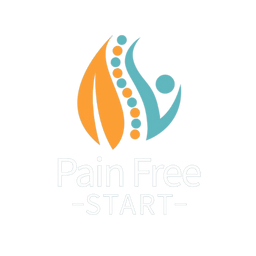Introduction
When it comes to aerobic exercise, walking vs. running is a common debate. Both activities offer incredible health benefits, including cardiovascular fitness, weight management, and mood-boosting effects. However, they differ in impact, intensity, and suitability depending on your fitness level and goals.
So, should you walk or run for better health? In this guide, we’ll explore the pros and cons of both, helping you choose the best option for your needs.
1. Impact on Joints: Low vs. High Impact
One of the biggest differences between walking and running is their impact on joints.
- Running is a high-impact exercise, putting more stress on your knees, hips, and ankles due to the increased force with each stride. This can increase the risk of injuries like runner’s knee, shin splints, or stress fractures.
- Walking, on the other hand, is a low-impact exercise, making it gentler on the joints. It’s an excellent choice for arthritis sufferers, injury recovery, and older adults who need a joint-friendly workout.
Top Tip – Arthritic knee? Take a look at my FREE Masterclass where I share exercises and more. Click to enrol or learn more.

2. Calorie Burn & Weight Loss: Which Burns More?
If your goal is weight loss, running generally burns more calories than walking.
- Running burns about double the calories of walking per minute due to its higher intensity. A 30-minute run can burn between 280–520 calories, depending on speed and weight.
- Walking for weight loss is still effective, especially at a brisk pace or on an incline. Aim for your 10000 steps a day for weight loss and fitness over time.
Top Tip – If you prefer walking, increase speed, duration, or incline to maximise calorie burn.
3. Cardiovascular Benefits: Heart Health & Endurance
Both walking and running improve cardiovascular health, but at different intensities:
- Running quickly elevates your heart rate and improves VO2 max, making it a more intense cardiovascular workout.
- Brisk walking still strengthens the heart and reduces heart disease risk, especially when done consistently. Hill walking or interval walking can boost your cardio endurance without the high impact of running.
4. Injury Risk: Is Running or Walking Safer?
Running injuries are more common due to repetitive impact and overuse. Common injuries include:
✔ Shin splints
✔ Runner’s knee
✔ Achilles tendinopathy/tendinitis ( Struggling with this? I have a FREE Masterclass click to learn more)
✔ Stress fractures
In contrast, walking injuries are rare, making it the safer choice for long-term sustainability. However, poor posture, incorrect footwear, or sudden intensity increases can still cause strain or discomfort.
Top Tip – Whether you walk or run, invest in supportive shoes and practice proper technique to prevent injuries.
5. Accessibility & Sustainability: Which Is More Practical?
- Walking is highly accessible—you can do it anywhere, without special equipment or training.
- Running requires more effort in terms of stamina, proper gear (running shoes), and suitable routes to avoid injuries.
For beginners or those returning to fitness after an injury, walking is the better starting point before progressing to running.
6. Personal Preference: What Do You Enjoy Most?
The best exercise is the one you enjoy and can stick with.
- If you love outdoor walks, socialising, or exploring nature, walking is ideal.
- If you thrive on intensity, challenges, and time efficiency, running might be a better fit.
Mixing both can offer the best of both worlds—walking for recovery days and running for endurance and calorie burn.
Conclusion
Walking vs. Running – Which Should You Choose?
Both walking and running offer significant health benefits, but the best choice depends on your fitness level, goals, and joint health.
✔ Walking is an excellent low-impact option, making it ideal for those with joint pain, beginners, or individuals recovering from injuries. It’s sustainable, accessible, and easy to incorporate into daily life.
✔ Running provides a more intense workout, burning more calories in a shorter time while improving cardiovascular endurance and overall fitness. However, it carries a higher risk of injury and requires proper technique and recovery.
Ultimately, choosing between walking or running depends on what fits your lifestyle, preferences, and long-term fitness goals. Whether you walk, run, or do a combination of both, consistency is key to maintaining an active and healthy lifestyle.
Take care, Helen
Helen Manders BSc (Hons) MCSP HCPC
Chartered Physiotherapist Since 2001
If PAIN or INJURY is limiting you then I would LOVE to HELP. Click to learn how I can support you.



